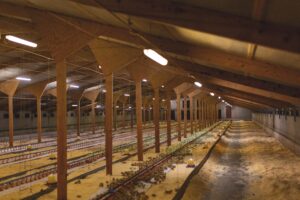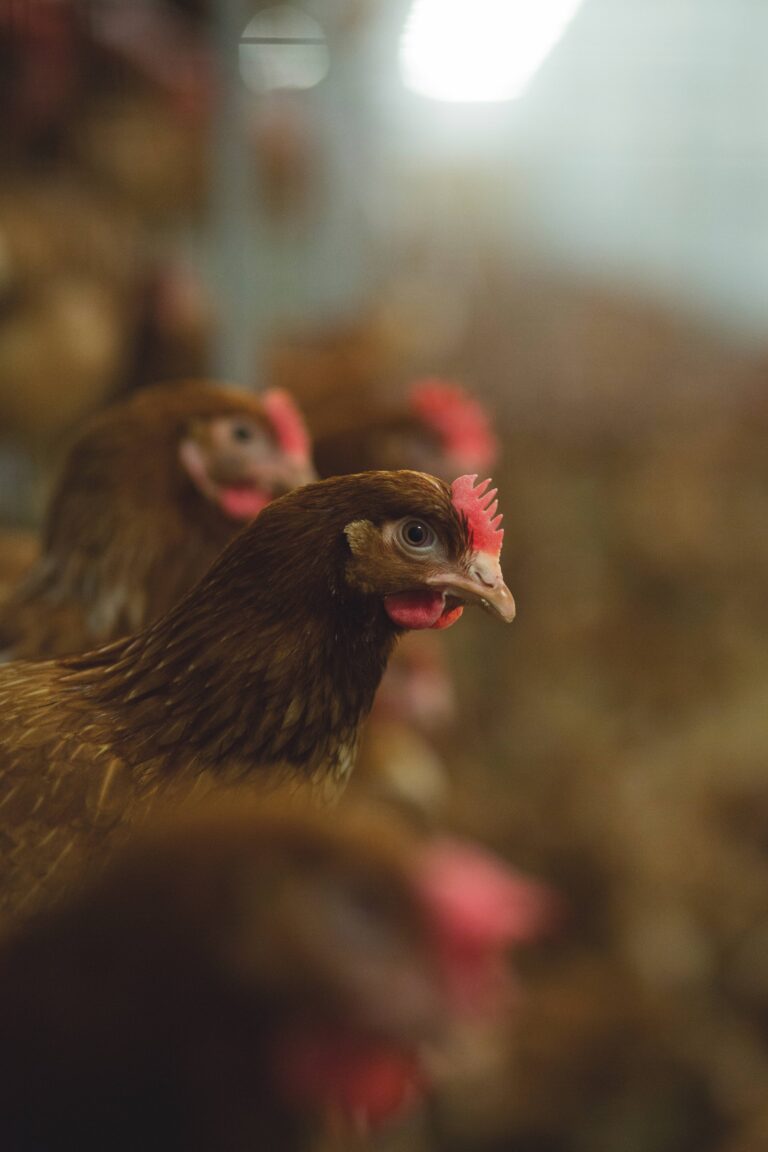L J Fairburn’s award-winning rearing operation is built on careful planning and collaborative working, as Michael Barker finds out
It’s fair to say that L J Fairburn & Son is a company on a mission. The firm has been a serial award winner in the past few years as it combines outside-the-box thinking with collaborative working practices to create a business model fit for both the present and future.
Amidst all of its recent success, one aspect of the business that has flown under the radar is its impressive pullet-rearing operation, but that was rectified last summer when Fairburn’s picked up the award for Pullet Rearer of the Year at the 2024 National Egg & Poultry Awards. To hear all about how it achieved the win, Poultry Business spoke to business development manager Ryan Collingwood and national production manager John Holt, who have been important figures in driving the company forward alongside chief executive Daniel Fairburn and other key members of staff.

Fairburn’s has over 50 years of rearing experience, having started out rearing for its own laying farms and then, as the free-range market grew, moving on to also supply local farmers in the Lincolnshire area. Today, the company produces some 1.5 million pullets a year across eight sites spread predominantly across East and West Lindsey.
It quickly becomes apparent from speaking to Collingwood and Holt that L J Fairburn is – and has been for some time – a business of perpetual motion, constantly looking for opportunities to expand and improve. “As the business has grown, Dan [Fairburn] and the family wanted to grow with it,” Collingwood explains, “so what they do is expand the sheds, put in new technology and systems, add more birds, and grow it that way.”
Even in the few months since winning the award last summer, the company has invested in an additional shed, extended two others, converted a barn, and replaced an older system for colony rearing and turned it into an RSPCA-assured site. As if that’s not enough, there are plans to put three or four more sheds up to boost the rearing operation even further, while a new manager has been appointed in the shape of Liam Orchard.
The rationale for the expansion isn’t just a reflection of Fairburn’s own ambitions. “We’re growing our laying farms, but we are also growing our producer base,” Holt points out. “In the case of a lot of the producers, once we’ve sold our pullets to them, they come back to us. At the same time we are growing our producer base and they want our pullets as well. So we have to grow our rearing sites to accommodate both the new producers that are coming on board, and our existing producers who are expanding their current plots and sheds.”
Fairburn’s seems to be a business in demand, so what makes it such a good business to work with? Collingwood believes one of the biggest factors is the company’s ability to rear consistently high-class pullets, but it goes further than that in terms of putting high value on human interaction and developing meaningful two-way relationships. “We have an open-door policy for them to come and have a look at the birds, and we have several team members with a vast amount of experience,” he explains. “We’ve always got an open line of dialogue for discussions, and we give information to producers on a weekly basis. Producers really like that there’s a hands-on feel.”

Having a fully integrated business helps with cost savings too, and that extends beyond pullet rearing to the company operating its own feed mill, which gives Fairburn’s traceability, control and full knowledge of what it is feeding the birds. In a pleasingly circular operation, many of the local producers that Fairburn’s works with are also arable farmers and deliver wheat for the mill. “It’s like a cycle for everyone, and they’ve all got more than one finger in the pie, as it were,” Holt explains.
Getting the diets right is a key objective, but while nutrition specialists are always on hand to monitor and tweak the birds’ feed as required, Holt stresses they try to work with a small amount of raw materials and produce a consistent ration as the birds aren’t keen on a lot of change.
Pullet rearing has its own set of challenges, and one of the areas that preoccupies much of Holt’s time is juggling the demands of different vaccination programmes. “We have monthly meetings with the veterinary team, and then we discuss and tweak vaccination programmes,” he says. “That’s probably one of the biggest challenges. The vaccinations are there for two reasons – in the early stages it’s to protect the bird in rear from disease, and in the latter stages it’s to protect the bird in lay. But we’ve got many customers now who’ve all got different requirements and are wanting slightly different vaccination programmes, so that all adds a bit of complexity when it comes to deciding what birds to rear where.”
Holt says that solving that particular jigsaw involves regular meetings with vets and then figuring out their customers’ needs as a priority, before then attending to Fairburn’s own requirements. “We’ve always given the producers what they want and I think that’s another reason they keep coming back to us,” he adds. “Sometimes they’ve gone elsewhere and been told their needs can’t be accommodated, but we try to bend over backwards to do so.”
Staying on the topic of vaccinations, Holt says that if it was decided at an industry level to vaccinate against avian flu then the company would happily fall into line. That inevitably leads onto the theme of biosecurity, and L J Fairburn makes it a high priority, with no movement between sites and all visitors expected to be bird-free for 48 hours before any visit. “Avian flu is a constant worry, and you have to make sure you’ve got your own house in order,” says Collingwood. “It’s about making sure your biosecurity practices are right up there, from entrances, to wheel wash, to making sure your sheds are all locked, that there are no cracks and so on. You can limit the risk by maximising biosecurity and that’s what I think we do very well. The beauty of it is we are a large company but all the biosecurity practices are the same across the sites.”
In terms of technological developments, Fairburn’s has recently trialled the Big Dutchman multi-tier rearing system, with another expected to be built next year; has upgraded the dosing units; and since winning the award has installed an LED lighting system with dimmers that gradually fade out to provide better frequency of light in one of the older sheds.
New rearing sheds are built not on the basis of cost, but on feedback from producers, and again, it comes back to a collaborative worldview that is serving the company well. “We have to communicate and we want the feedback as well,” says Collingwood. “Not everything runs smoothly, but we want the feedback and then we can advise and implement a change next time if needed.” The close working relationship extends to breeding companies too, with Holt noting “you can always make a bad chicken out of a good chick, but it’s very hard to make a good chicken out of a bad chick”.
Growth in the rearing business dovetails with the growth in the laying side, and plans are currently being finalised for the next three years as managers establish how much extra rearing capacity they need. It’s a delicate balancing act, Holt explains: “If a new customer comes on or one of our producers wants to build a new laying shed, it isn’t just a case of them saying ‘I’m going to build a shed and want it housing in February next year’, because it might not be the perfect time. We have to try to balance the two in terms of the egg requirement and pullet availability. We’ll move some of our own flock dates around to try to accommodate what they want, but it takes a lot of working out.”
L J Fairburn has been a regular award winner in recent years, with gongs for the company as a whole, its creative initiatives such as the Bed & Breakfast Partnership, and for up-and-coming staffers like Poppy Jones. So what does success for the pullet-rearing business in particular mean? “We wanted to enter the rearing awards as we know that our pullets are fantastic and really consistent, and we wanted that to be recognised within the industry,” says Collingwood. “We know how well we are doing and it’s a nice achievement for the profile of the business that the industry recognises we’re doing a great job.”
Holt adds: “Obviously our existing customers are keen to come back to us, but if you’re somebody that’s never had pullets off us before, the award is a bit of proof that we are doing a good job.”
There’s little doubt that that’s the case, and it’ll be fascinating to see what developments this creative business comes up with next.


